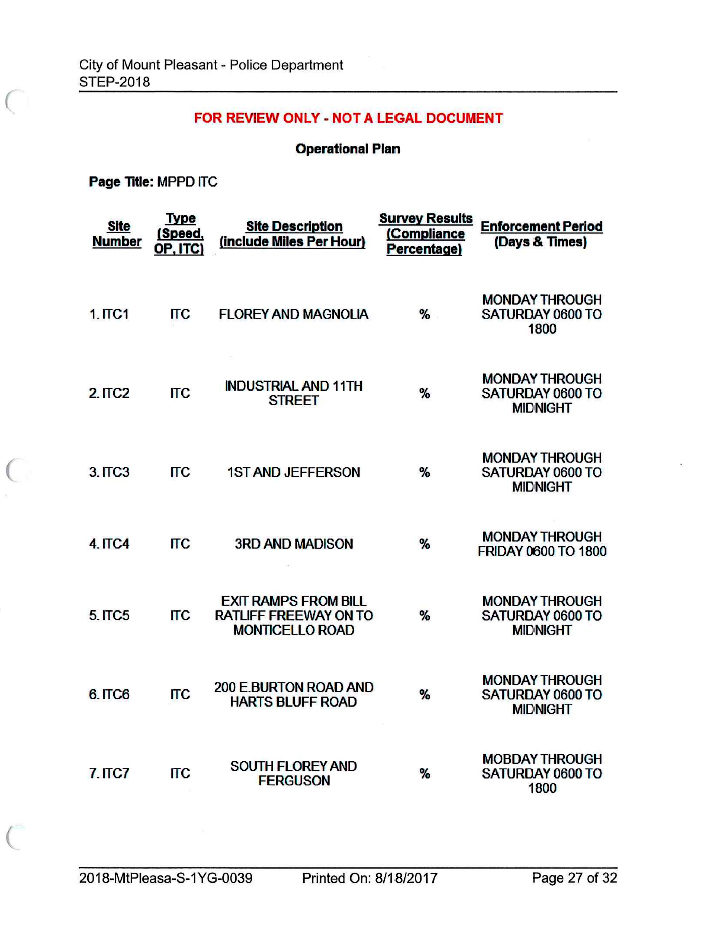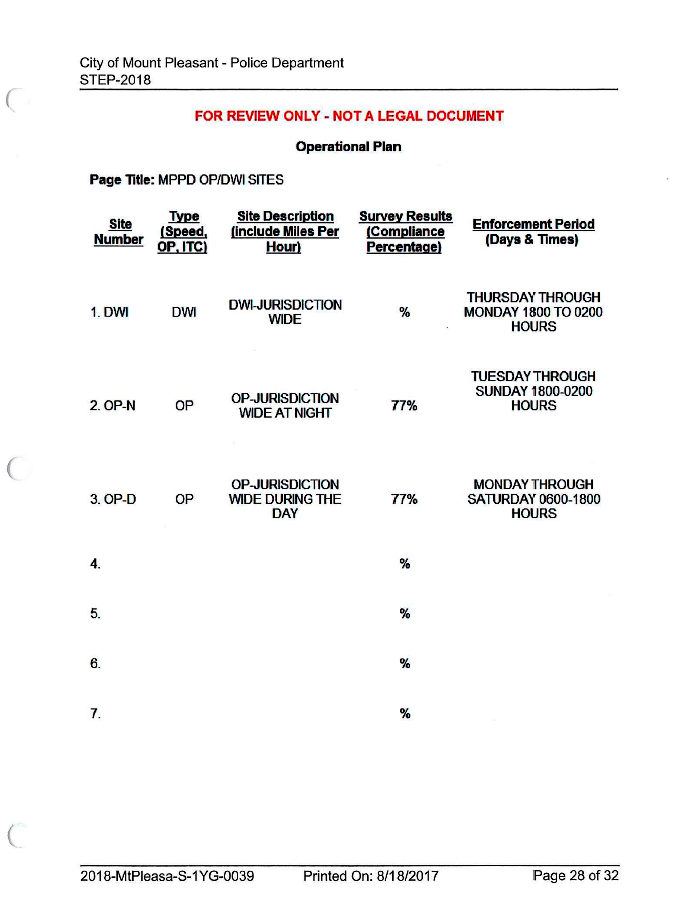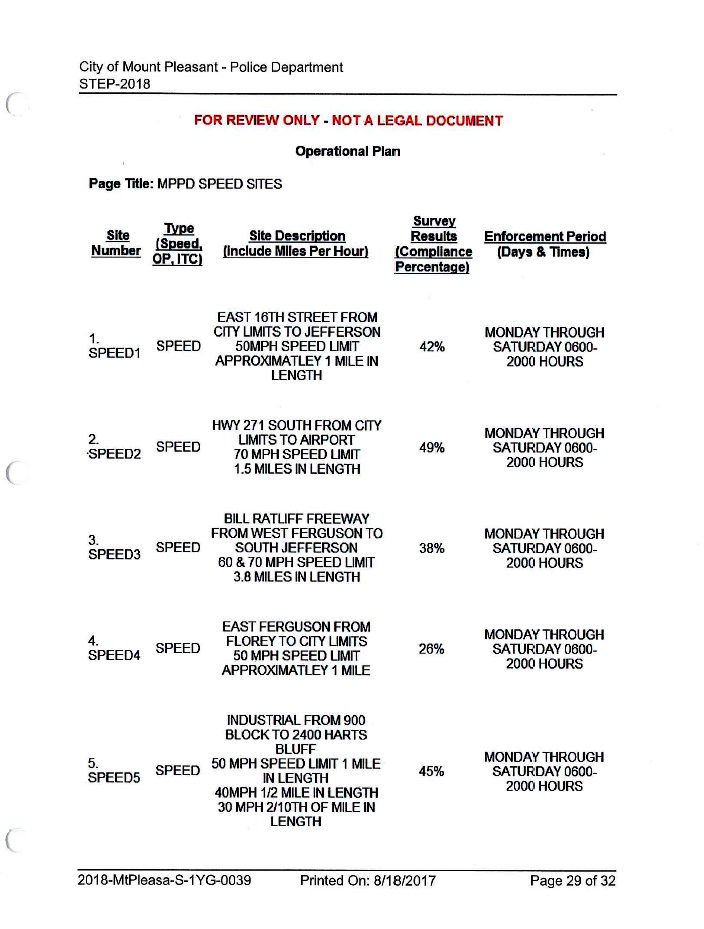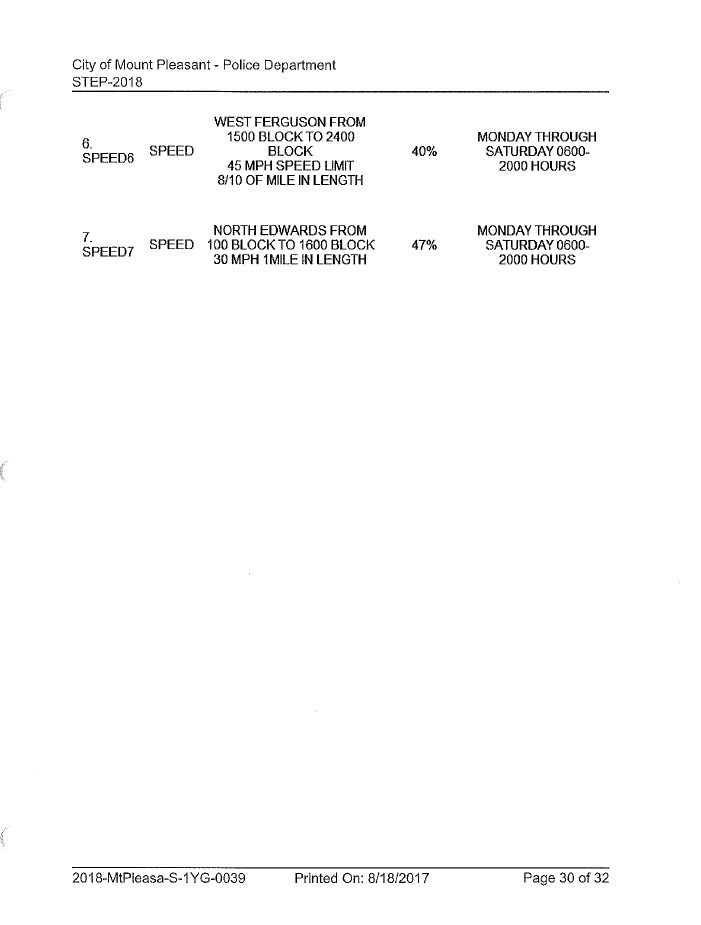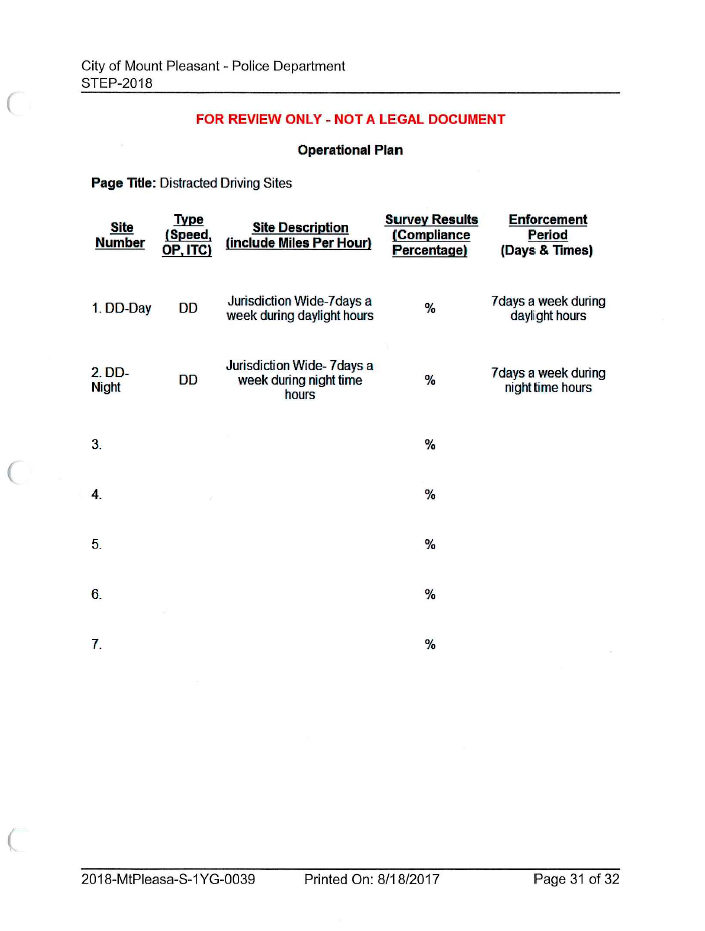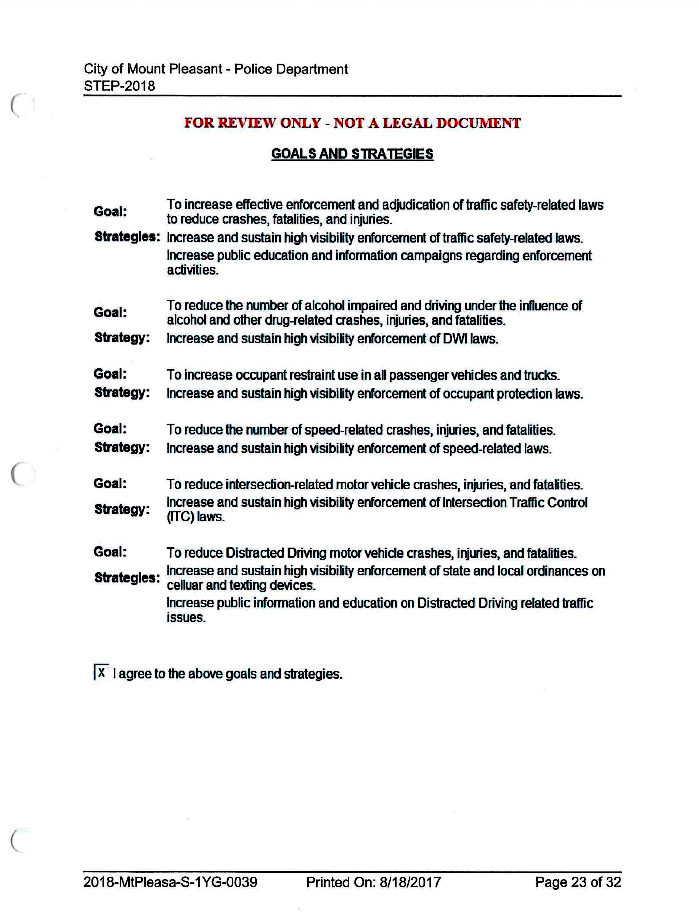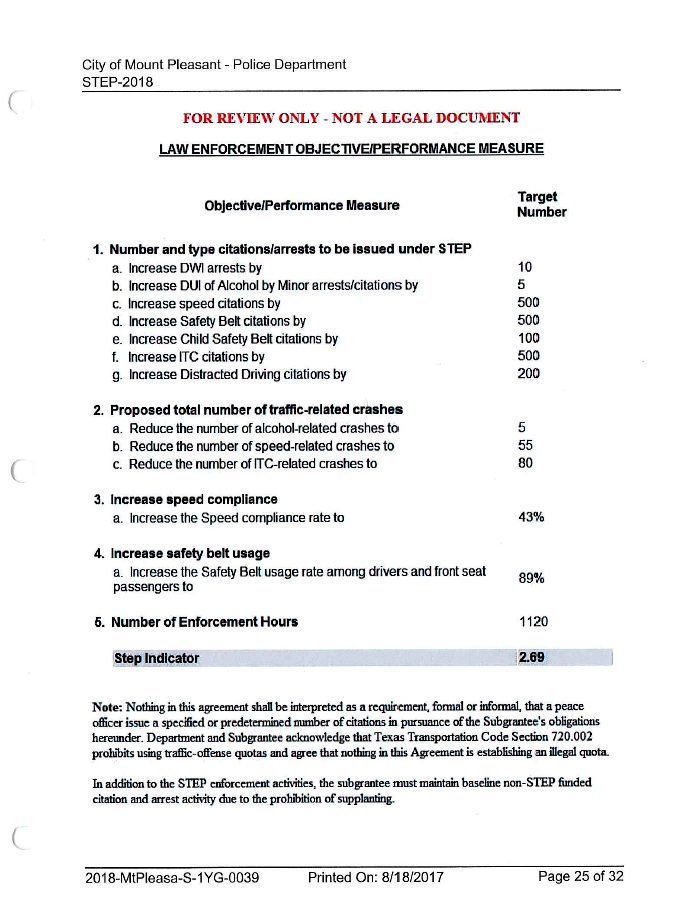TxDot Sets Traffic Ticket Goal for Mt. Pleasant
 Winning a TxDOT grant to improve driver safety, Mt. Pleasant is enhancing enforcement of traffic laws.
Winning a TxDOT grant to improve driver safety, Mt. Pleasant is enhancing enforcement of traffic laws.
MT. PLEASANT – Revenue in traffic court is up, rising from $938,746 in 2016 to over $1.4 million at the September 30 close of the city’s 2017 fiscal year. Driven by $40,000 in federal money channeled through a Texas Department of Transportation (TxDOT) grant and $17,000 in matching local money, the STEP initiative generated $516,597 in revenue returned to the state.
Another $926,492 collected by the city exceeded budget projections by more than $300,000.
Police Chief Wayne Isbell’s department has secured another year-long STEP grant that began with the October 1 opening of the 2018 fiscal year. STEP stands for State Traffic Enforcement Program.
Heightened enforcement corrects driver behavior, reduces crash rates, saves lives and gets dangerous vehicles off the roadway, Chief Isbell said and cited additional benefits
“The contacts resulting from traffic stops result inwarrants being served, get drugs off the streets and provide opportunity to investigate other illegal activities,” said the career peace officer who also serves as a director for the Texas Police Chiefs’ Association. In January, he will move from his post as Vice President to President of the East Texas Police Chiefs’ Association.
The state is pushing enforcement over and above routine traffic enforcement that serves as a base line in police work, the chief explained.
“One aspect of routine enforcement is working traffic in high crime areas,” he said. “It creates a neighborhood awareness of police presence and gives officers an opportunity to make further observations during a traffic stop.” He said such observations routinely result in drug arrests.
Standard protocol is for the officer to identify himself, state the reason for the stop, ask for the license and insurance and ask questions.
“Asking questions is part of the officer’s job,” Chief Isbell said. He cited the example of officers asking from where drivers are coming or where they’re going. Officers may ask for permission to search a vehicle.
The research-driven STEP initiative expands these opportunities. Grant requirements include surveys to identify traffic issues across the city.
From US business routes to Bill Ratliff Freeway, the survey-based plan penetrates the Main Street District and neighborhoods, areas targeted for “performance measured” objectives determined by the state on the basis of traffic surveys and additional data provided by the city.
With funding for an additional 1,135 “enforcement hours,” the number and type of citations and arrests proposed by the state for fiscal 2017 included an additional three DWI arrests, 50 more child safety restraint citations, another 300 safety belt tickets and 1,500 more write ups for speeding as compared to base-line data from 2014.
Innovation added to the mix with a citation issued to a bicyclist cited for running a neighborhood stop sign at South Florey and Magnolia, one of the neighborhood targets identified by the state based on the department’s traffic survey of violations at intersections.
“It’s not my position to say what officers enforce,” Chief Isbell said. “I don’t dismiss tickets and we don’t play favorites. We don’t give verbal warnings. With every stop the officer writes either a citation or a warning at his or her own discretion.”
Mt. Pleasant’s population passed 16,000 in 2016.
In 2017, officers wrote 9,987 citations and issued another 7,045 written warnings. That’s not representative of the number of traffic stops as a single contact may generate multiple citations, Chief Isbell said.
“About forty percent of those were issued to out of town drivers,” he said.
Times and locations targeted for enhanced traffic enforcement:


